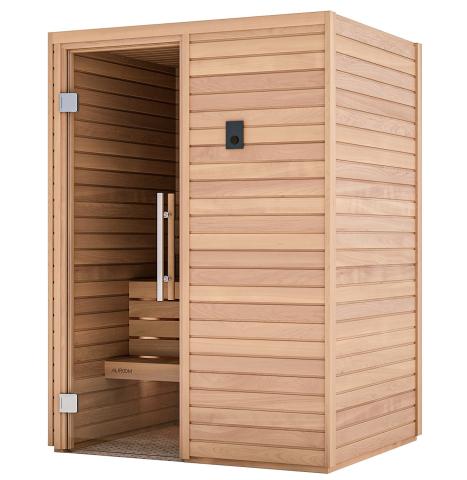Traditional Sauna Can Be Fun For Everyone
Table of ContentsTraditional Sauna Things To Know Before You BuyThe Best Strategy To Use For Traditional SaunaThe Only Guide to Traditional SaunaSee This Report about Traditional Sauna
A lot of the weight shed in a sauna is water loss and is re-gained upon rehydrating. Nevertheless, undeniably sauna can be an integral part of a healthy and balanced weight reduction program. To check out the differences between traditional and IR saunas, I will separate these into verifiable, academic, and made distinctions.Hence, the best point in the saunawhich is at the ceiling directly above the sauna heateris generally between 185 and 190 F. Traditional Sauna. Claims that a conventional sauna exceeds 200 F is merely not real and not suitable for electric saunas sold in the United States. The temperature for a far-infrared sauna is normally set in between 120 and 140 F; nonetheless, unlike the standard sauna, the goal in and IR space is not to accomplish a high temperature
Due to this, the temperature level distinction is nearly unimportant, considering that profuse sweating causes both sauna types, but the method of heating the body is different. In an IR sauna the bather will feel hot and will certainly sweat a lot, however at much reduced temperatures. Thus, if the goal is to invest longer periods of time in the sauna, the IR sauna is an excellent selection.

Getting The Traditional Sauna To Work
When the heat is achieved, the elements cycle on and off to preserve the high temperature level. Most conventional sauna users take pleasure in putting water over the rocks to develop vapor to elevate sauna moisture levels. The benefits of pouring water over the rocks include: making the room much more comfortable, moistening the nasal flows, and allowing the usage of aromatherapy by blending crucial oils with the water.
In a far-infrared sauna, the heat waves penetrate the body to effectively heat up the body and elevate the body core temperature. To accomplish this boosted temperature, Far-infrared emitters create infrared energy which is close to the very same wavelength as that which the body normally emitsoften described as the "Crucial Variety" of 7 to 14 microns), so the power is well gotten by the body.
When the power goes into the body, it creates the body temperature level to raise and ultimately leads to perspiration. In an infrared sauna it is very important for the emitters/heaters to remain on nearly constantly. Considering that there is no mass of rocks to maintain warm, the sauna will cool if the emitters shut off.
As discussed above, the sauna bather in an infrared area wishes to place himself in front of operating emitters to obtain maximum benefit from the warm. The heating time for both areas can be extremely additional hints various, depending on just how the spaces are used. For a typical sauna, a bather must allow 30-40 mins for the space to accomplish a desired temperature level and to appropriately pre-heat the rocks.
Some Known Factual Statements About Traditional Sauna
A well constructed sauna will usually accomplish a temperature level of 150-160 F in regarding 30-40 mins. For hotter temperatures, the room may need to heat for a longer period.
To some, 15 minutes was "thrown away" while the infrared energy heated up the wood panels as opposed to warming a body, while others find a pre-heated room to be a lot more comfy and think a raised starting temperature is essential to start sweating. The size of advised use for every area is about the same (10-15 mins per session); nevertheless, as a result of the reduced air temperatures and the capacity to feel the results of infrared warmth faster than a conventional sauna, it is not uncommon for a person to spend a total of 20-30 mins in an infrared sauna.
Conventional saunas tend to be bigger (therefore make use of more electricity) than infrared saunas, although typical saunas are absolutely readily available in one and 2 individual dimensions. For a two-person conventional sauna, 5x6 or 5x7 size is most preferred. The leading bench can comfortably seat 2 or three individuals and is likewise enough time to rest throughout the sauna session.


The average cost per kWH of electricity in the U.S. is approximately $0.11, so a 4.5 kW heating unit will certainly set you back approximately $.50 to run for one hour, if the heating system runs constantly for one hour. Commonly a sauna heating system will certainly compete 75% of the initial hour and top article 50% of subsequent hours on because the elements cycle once the established temperature level is accomplished.
Indicators on Traditional Sauna You Need To Know
A two person far-infrared space is generally physically smaller than a typical sauna, typically concerning 4' x 4' or smaller. The IR heating unit is usually 1.5-1.7 kW utilizing a 120 volt 15 amp plug-in solution. Given that the room can be used faster than a sauna room, we will certainly presume the space is made use of for to of an hour consisting of warm up time.
There is a hardly ever discussed difference in the social experience in between the two spaces. While our culture has lost some of the my response social benefit of the traditional sauna experience, it can be very socially gratifying. From family members time in the sauna, to heart-felt conversations with better halves, to sauna partiesthe typical sauna experience can bring about intimate mingling.
The majority of greater end infrared rooms consist of colored light treatment, noise systems and full-glass fronts.